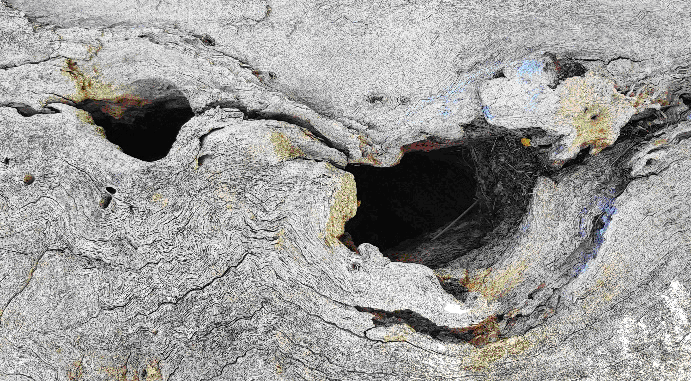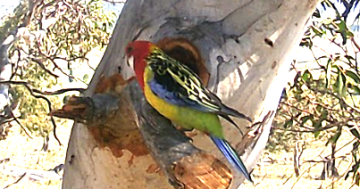
Landcare is asking land owners not to cut down hollow-bearing trees because they provide a refuge for wildlife displaced by bushfires. Photo: Supplied.
Upper Snowy Landcare Network (USLN) coordinator Lauren Van Dyke said she is delighted to receive funding this week to purchase trail cameras to capture images of small animals, such as birds and mammals, using tree hollows in alive and dead trees.
The project is supported by Landcare NSW with funding from the Landcare NSW Natural Disaster Seed Fund, and is one of 17 Landcare NSW organisations that have received funding.
Landcare NSW CEO Dr Adrian Zammit said the funding will help support Landcare groups such as Upper Snowy Landcare Network to re-establish projects and sites that have been affected by drought and bushfires.
“It is so important to support our NSW Landcare community through these times,” he said. “With so much damage and loss, this is just one small way we are supporting our communities back to recovery.
“Our communities have experienced incredible hardship during the past couple of years and these projects are a way of bringing all members of our community together to recover.”
“As the state peak body for Landcare, our aim is to provide resources to help Landcarers in NSW care for our land, environment and communities. By releasing 100 per cent of the funds from our fundraising appeal, we are ensuring our communities have the support and resources they need to deal with the challenges.”
Ms Van Dyke said the trail cameras will support an existing project to restore degraded grassy woodland vegetation across 40 hectares on the Gegedzerick Travelling Stock Reserve (TSR) near Berridale, a site that has been managed by USLN for five years.
The site sits inside an ecologically compromised tree dieback area. It is drought affected and more recently acts as a refuge for native species in need of habitat after being flanked by bushfires in every direction during the past summer.
“The trail cameras will help us positively identify and strategically support native species which rely on this particular woodland for their survival,” said Ms Van Dyke. “We look forward to setting up the cameras initially to collect baseline information before we commence our on-ground work, and will continue to use the cameras as we implement replanting efforts such as direct seeding, drone seeding and planting using various methodologies.
“We are likely to bring many new bird and arboreal species onto the 40-hectare site and we want to capture this happening in real imagery. Any photos of native animals using hollows will support our recent public push – via a free brochure – asking landholders to retain their dead hollow-bearing trees rather than cut them down or burn them.”









